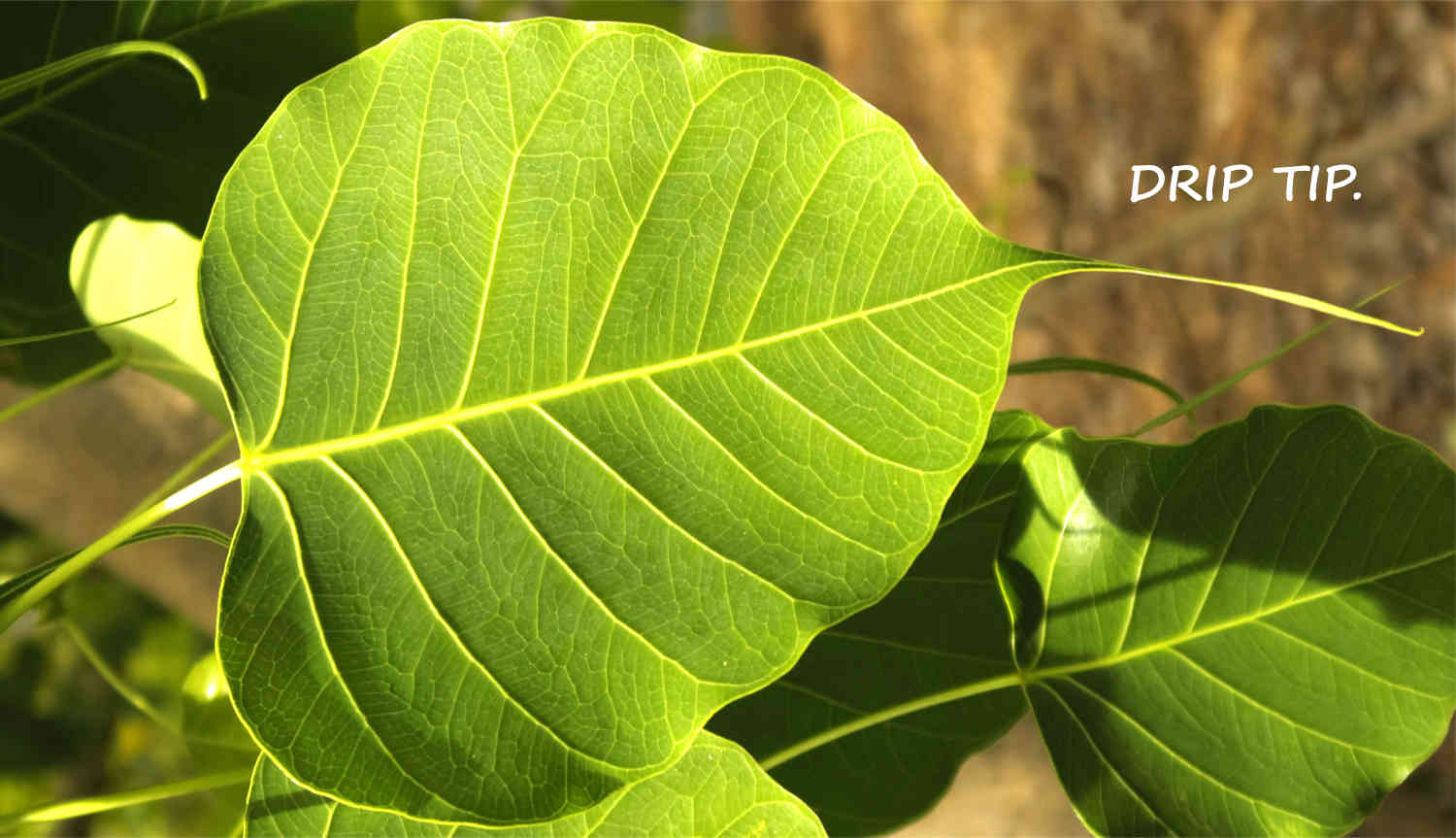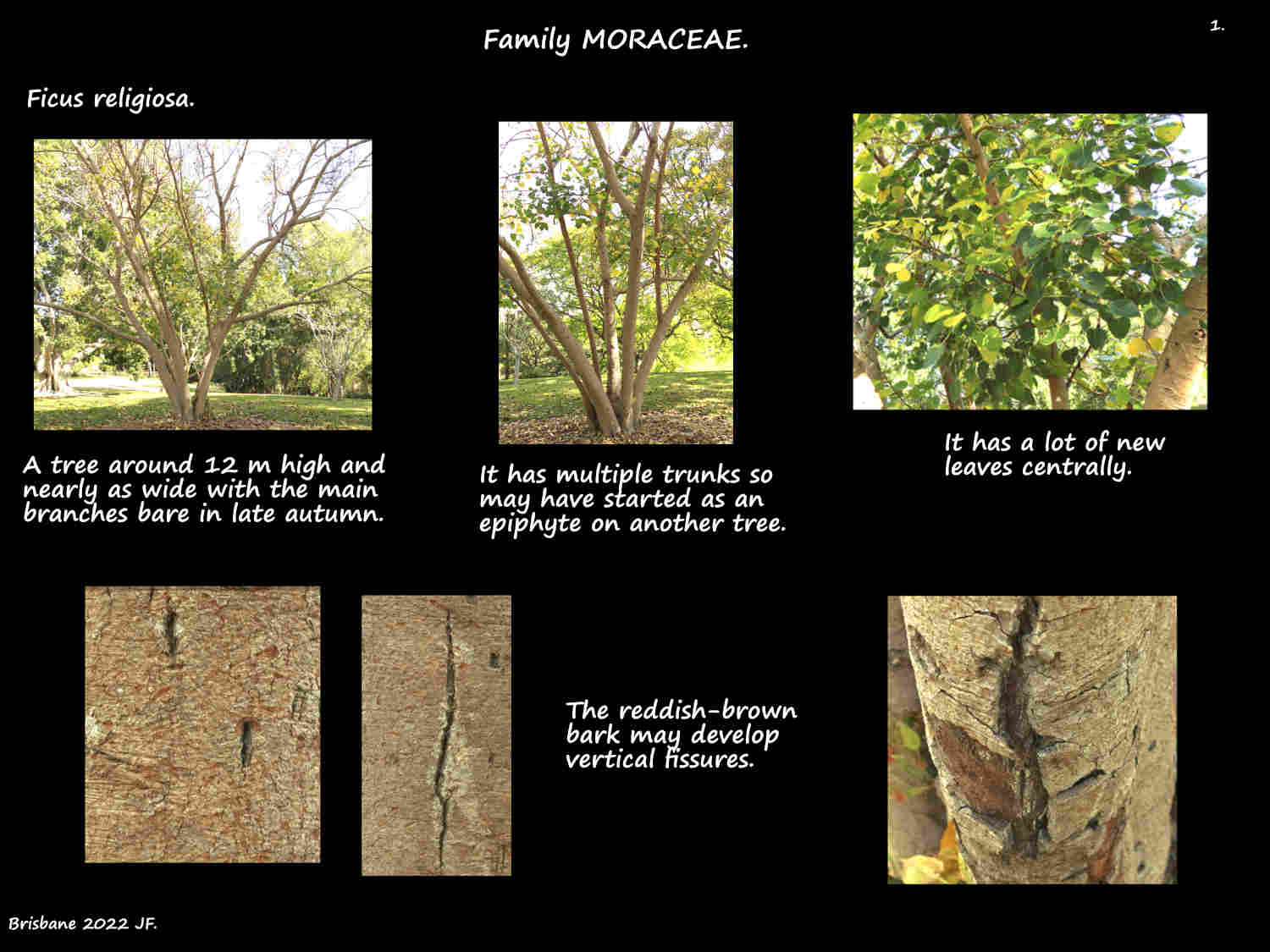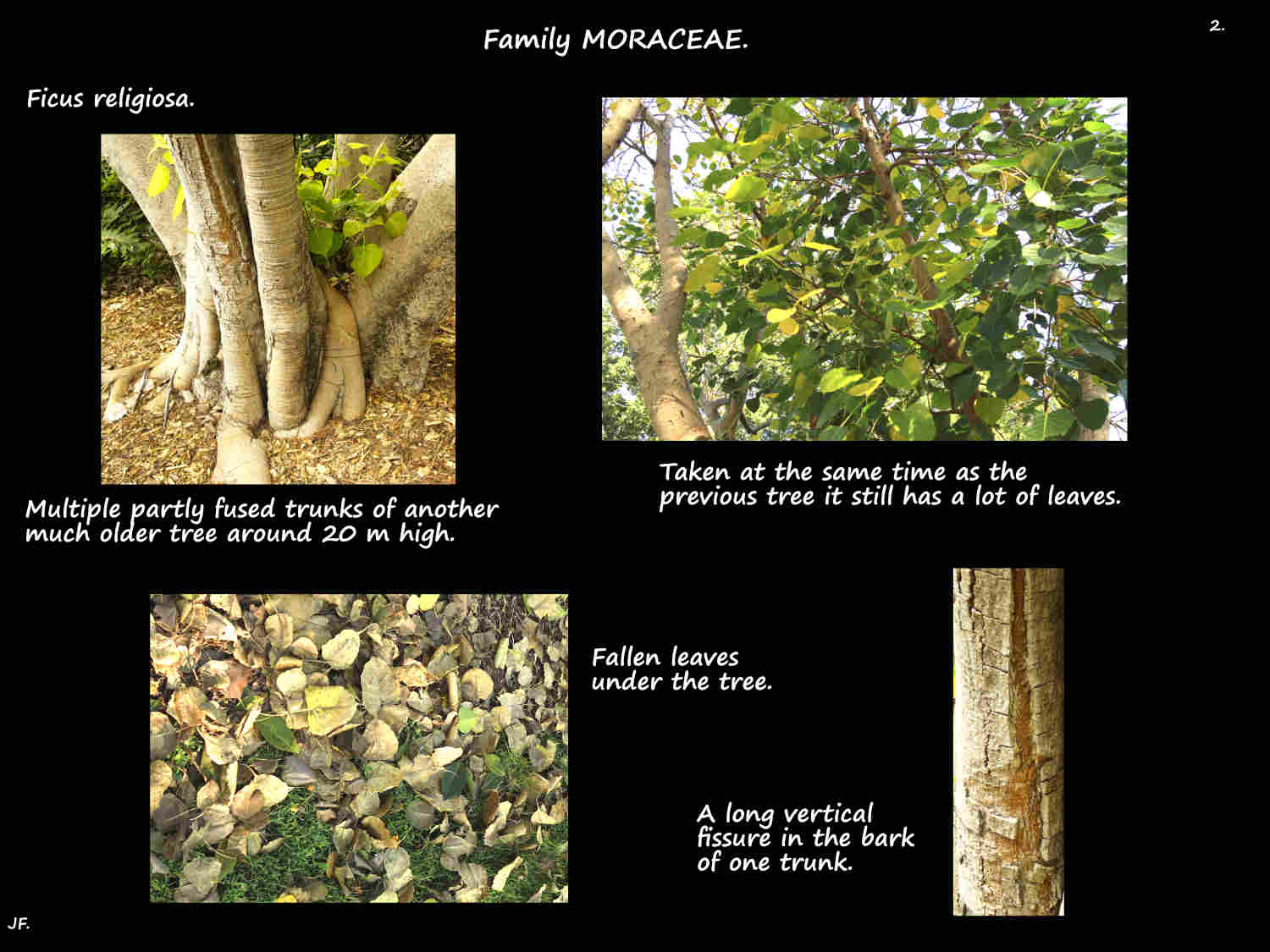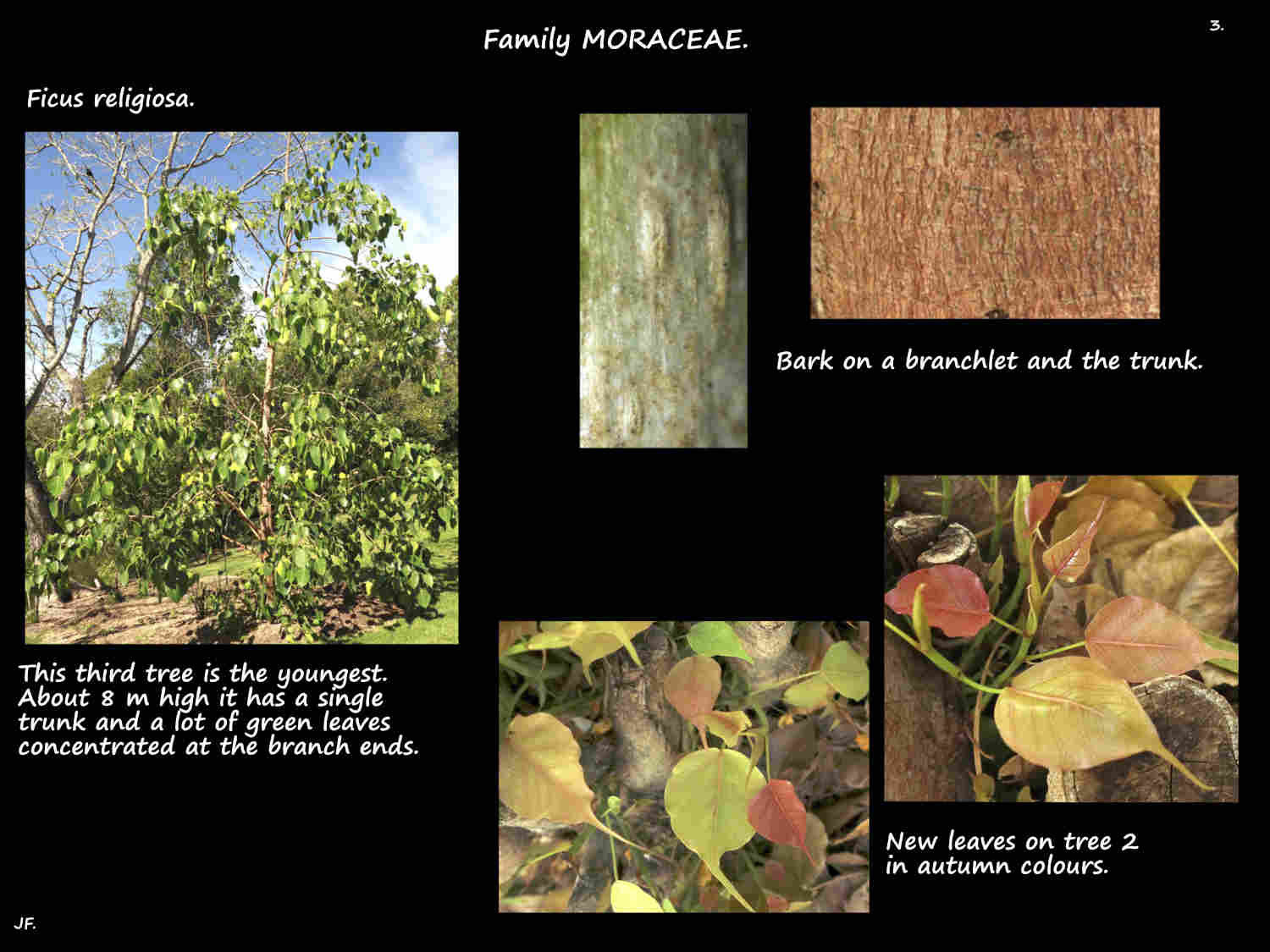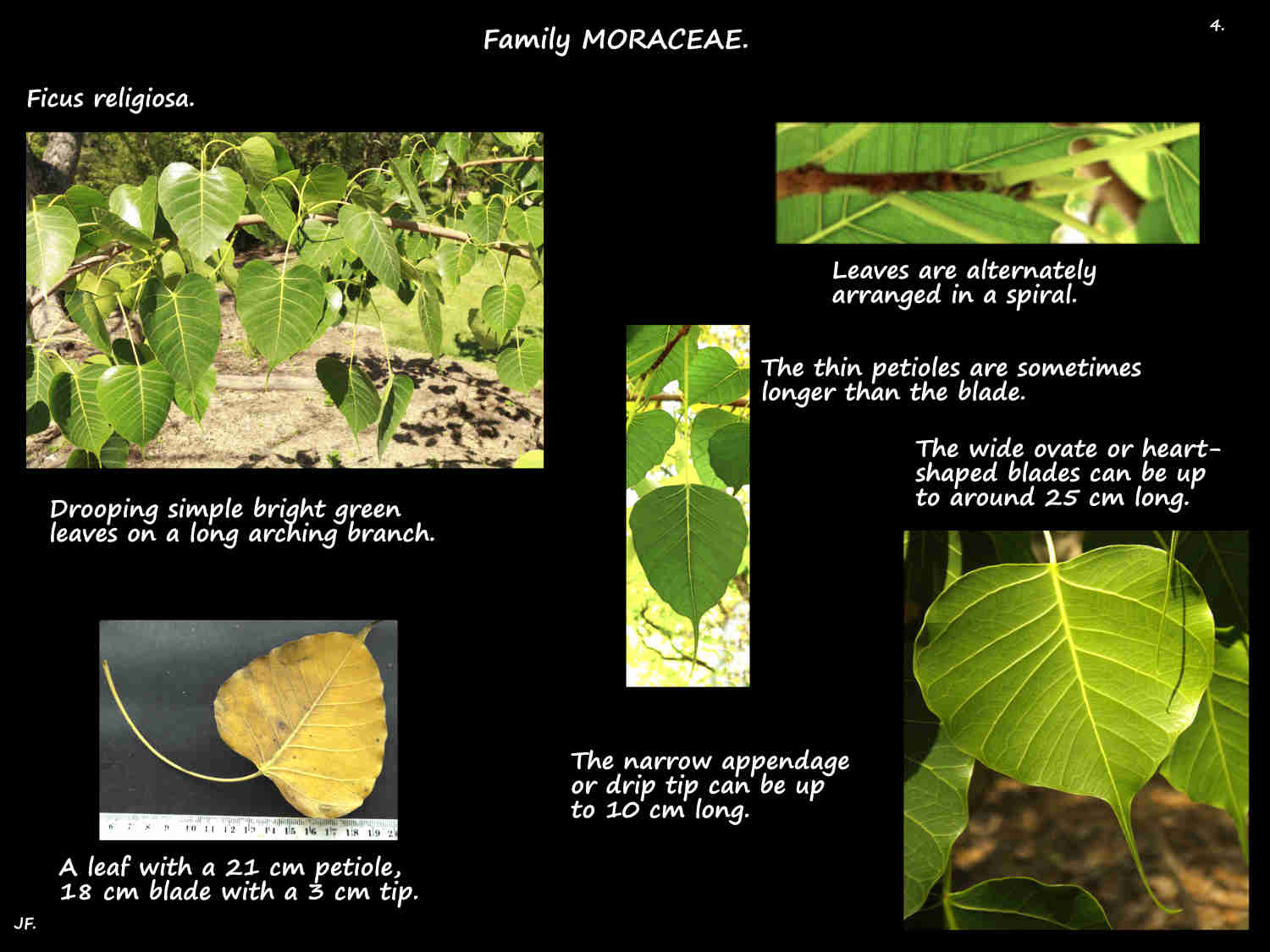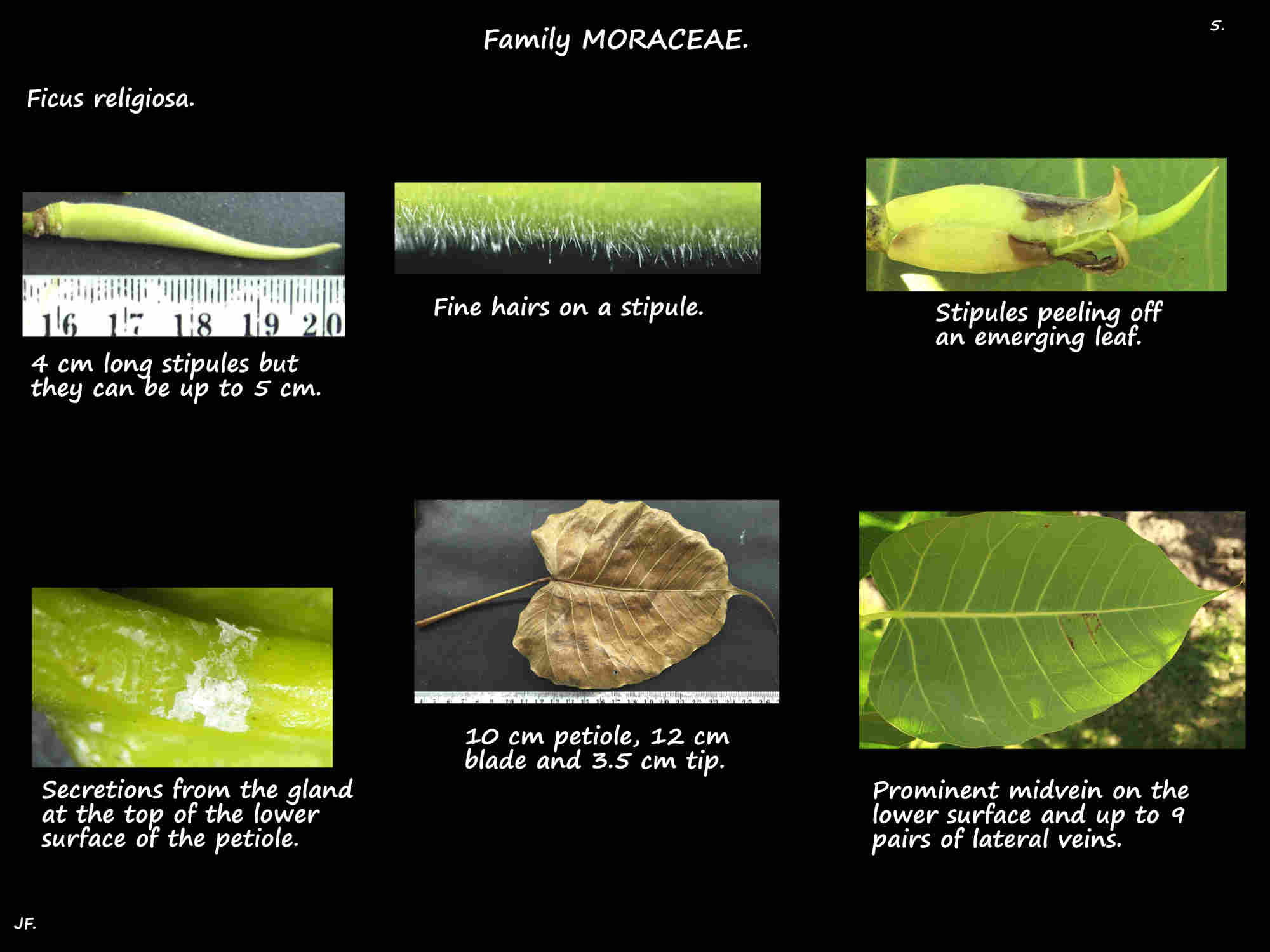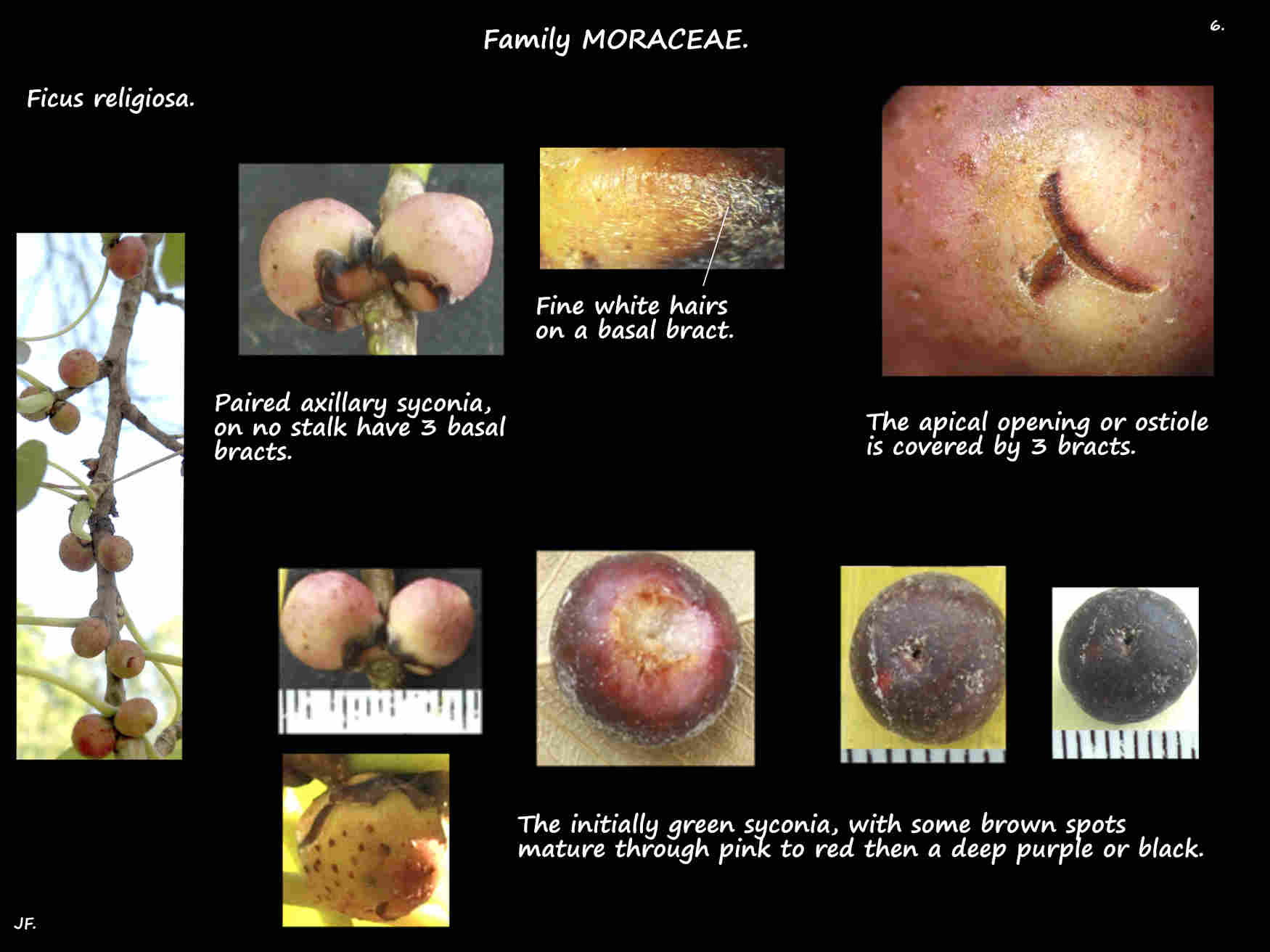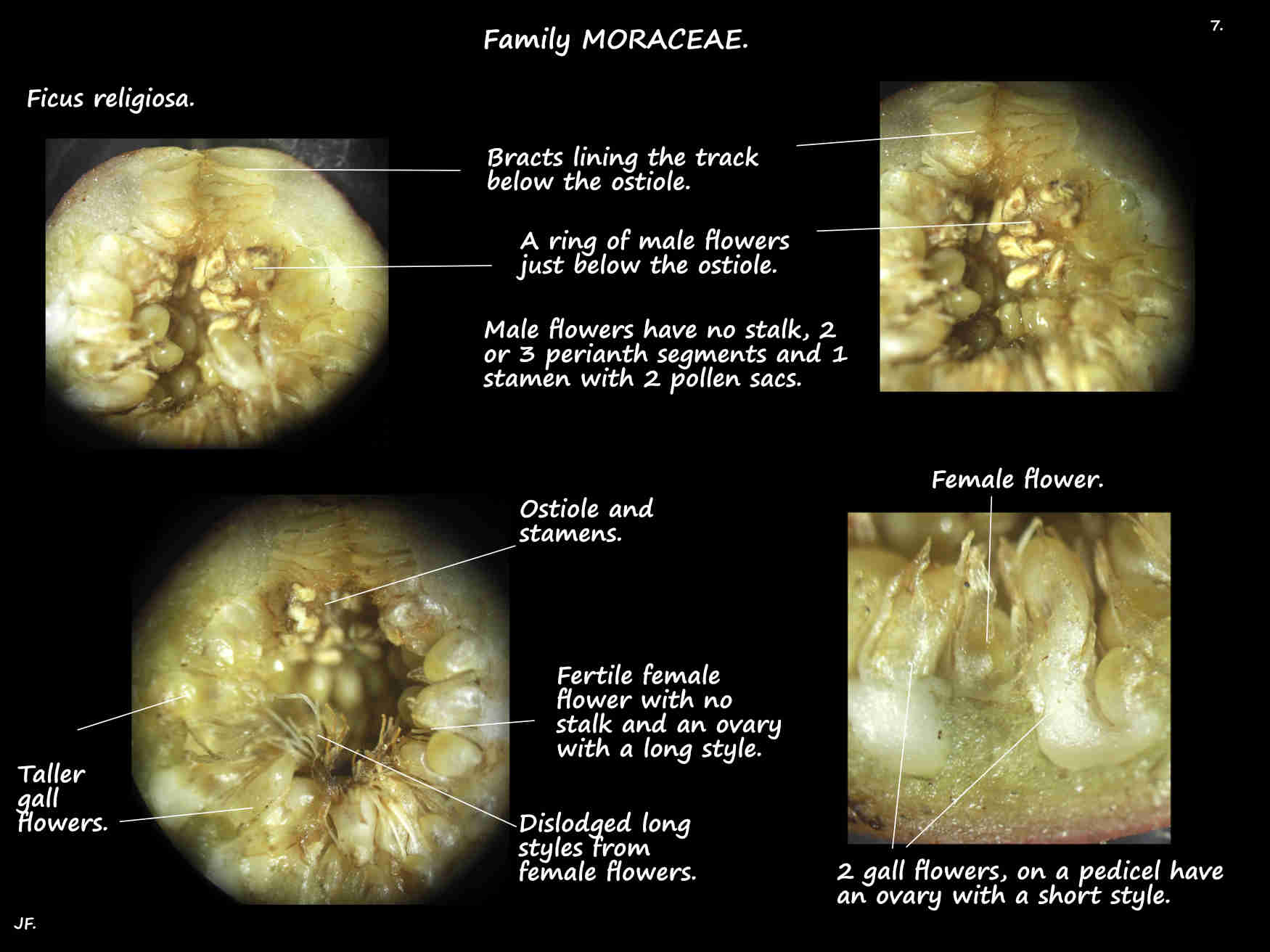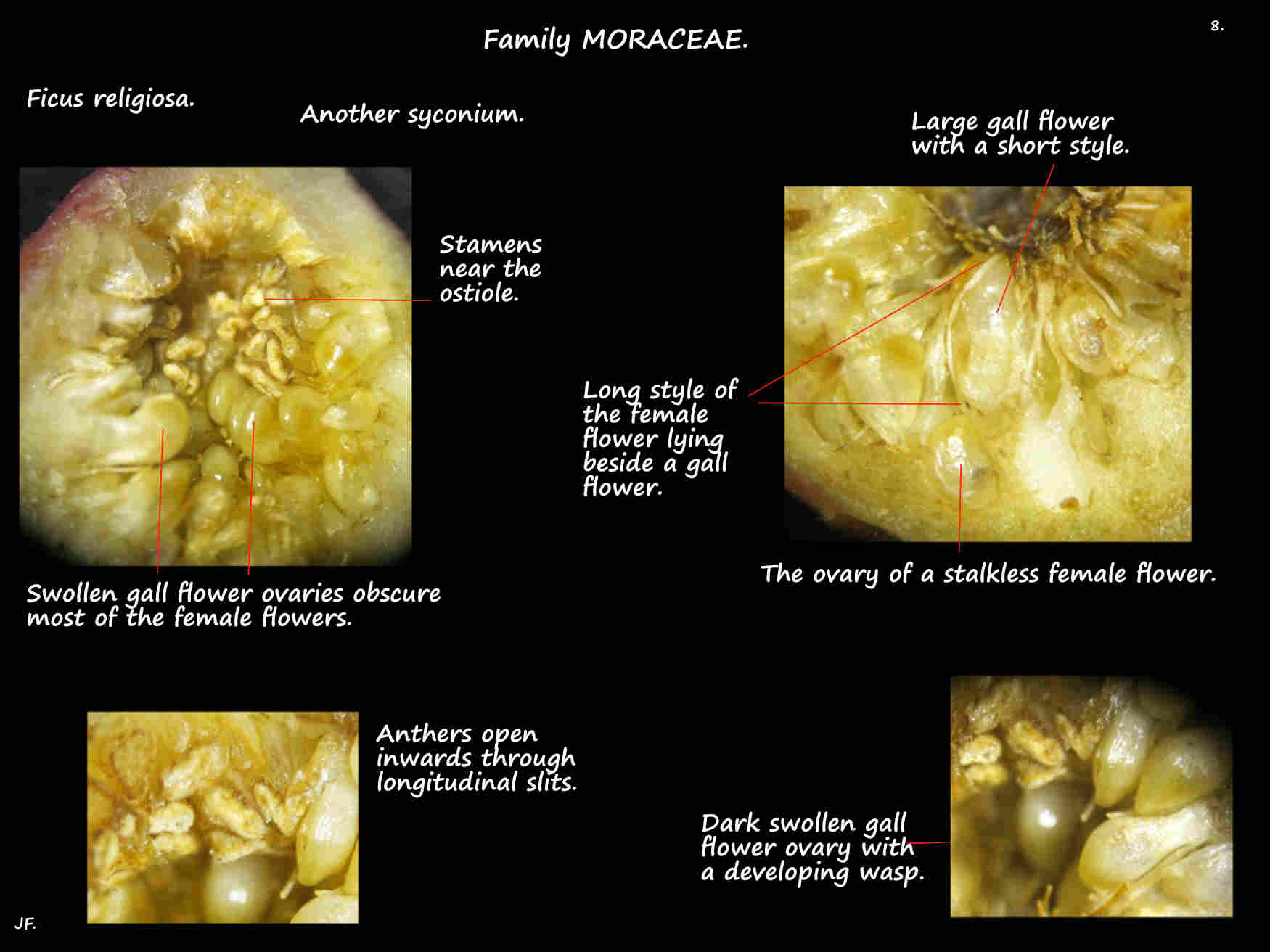Ficus religiosa.
In Family Moraceae > Genus Ficus > Subgenus Urostigma the Sacred fig is native from India to China.
The Bo trees can live for thousands of years.
Often germinating on another tree their roots, on reaching the ground take root and thicken into supporting trunks.
They rarely have aerial roots that strangle the host but its roots may split the host trunk.
Mature trees are 25 to 30 m high and almost as wide with trunks over 1 m thick.
The initially smooth bark may later develops vertical fissures.
Small young branchlets may have some hairs and damaged parts exude a milky latex.
The simple drooping leaves are alternately arranged in a spiral.
The thin petiole, 6 to 12 cm long is sometimes longer than the blade.
There is a gland at the top of the lower surface of the petiole.
Stipules protecting the developing leaves are up to 5 cm long and may have minute hairs.
They fall off as the leaf emerges.
The leaf blades are commonly 7 to 16 cm long but may be up to 25 cm.
The broadly ovate, round or heart-shaped blades are 5 to 12 (4 to 16) cm wide.
The outstanding feature is the end of the blade which narrows suddenly into a very narrow appendage or drip tip that
can be from 2 to 9 or 10 cm long.
The shiny dark green blade is slightly leathery with an edge that may be wavy and there are no hairs.
Young leaves may be pink then bronze before becoming green.
The yellowish veins are prominent on the lower surface especially the midvein.
There are 1 or 2 pairs of lateral veins from the base and up to 7 or so above.
The paired axillary inflorescences are syconia formed from the enlarged and inverted receptacle (tip of the stem).
Up to 1 or 1.5 cm the roughly spherical syconia are directly attached to the stem with no peduncle.
The 3 basal bracts are almost impossible to see when the syconium is in situ.
Around 4 mm wide with a rounded tip they have very short hairs on the outer surface.
At the tip of the syconium is a small opening or ostiole through which the female pollinating wasps can enter.
It is mostly covered by 3 bracts only 2 or 3 mm wide.
More bracts line the track through the fleshy wall.
The green syconia have minute hairs on the outer surface.
Flowers are unisexual but all types are found in each syconium.
There are no hairs or bristles between the tightly packed flowers lining the inner surface of the syconium.
The few male flowers are in 1 ring just below the ostiole so female wasps leaving get covered in pollen.
They have no pedicel, 2 or 3 free perianth segments and 1 stamen with a filament only 0.2 mm long.
The 2 parallel oblong pollen sacs open inwards.
Female flowers, also with no pedicel have 3 or 4 free perianth segments.
The 1 mm long ovary has a single ovule and a slightly longer lateral style with a narrow stigma.
Scattered among the fertile female flowers are many taller infertile female or gall flowers.
On a pedicel they have 3 or 4 perianth segments and a spherical ovary with a short style.
The female wasp entering the syconium lays her eggs in the gall flowers as she cannot reach the shorter fertile
female ones but, as these have a long style she pollinates them.
The 1.5 cm figs are green with some brown spots then mature to pink then red, dark purple or black.
Each fertilised female ovule in the fig can develop into a small achene.
J.F.
